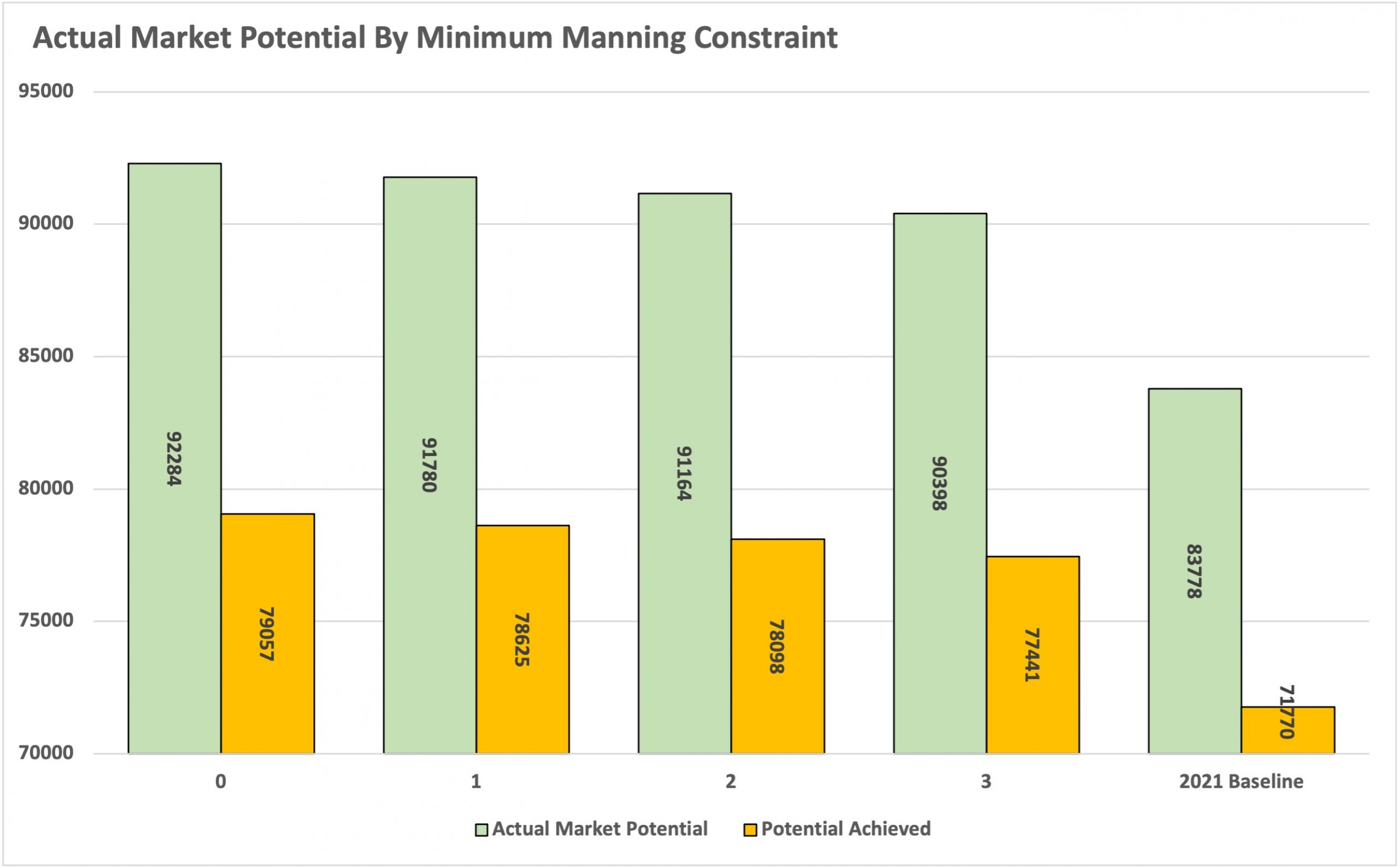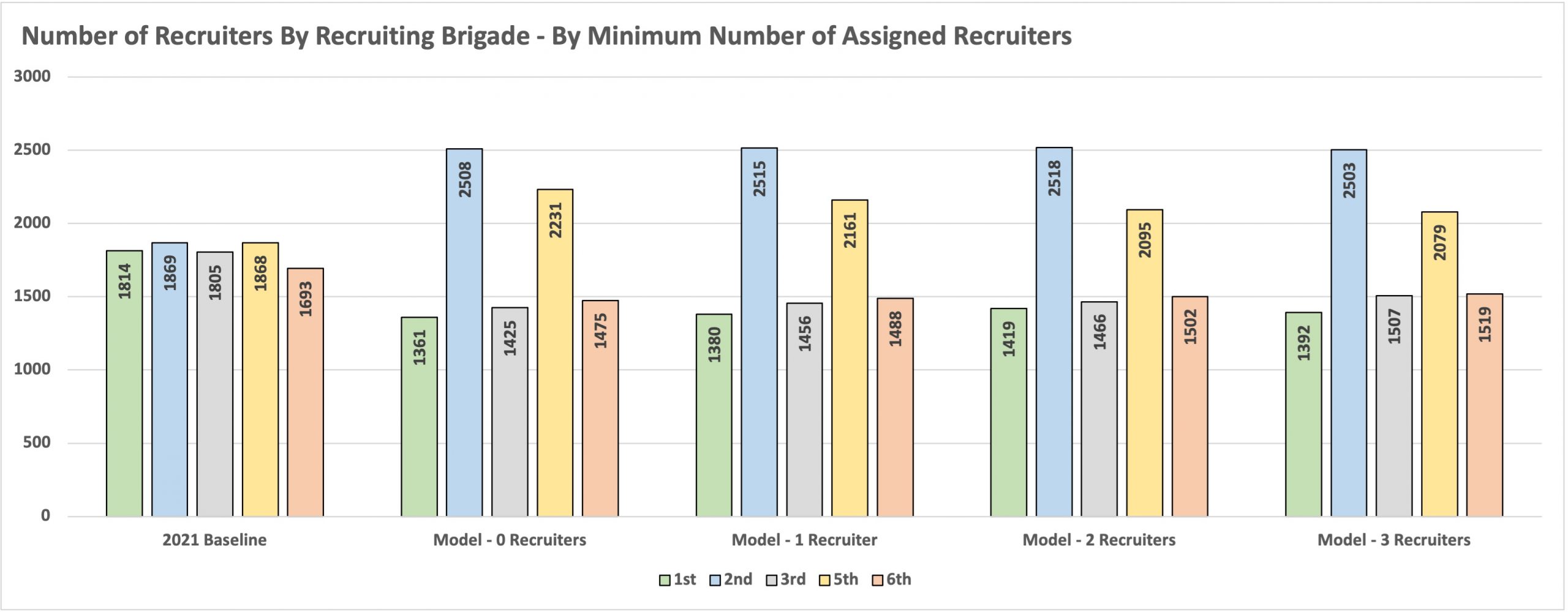An Optimal Army Recruiter Assignment Model
Project Type: Military
LoDI Team: Lihui Bai, Tim Lambert
Period: January 2022 – July 2022

Overview
The United States Army Recruiting Command (USAREC) is responsible for manning both the Active Army and the U.S. Army Reserve. Headquartered in Fort Knox, Kentucky, USAREC provides command, control, and staff support to more than 1400 recruiting stations across the world, consisting of more than 10000 soldiers and civilians. Each year USAREC is required to bring in anywhere between 70000 and 95000 new soldiers into the U.S. Army.
Purpose and Need
In 2021, USAREC was required to bring 93520 new soldiers into the U.S. Army. However, USAREC fell significantly short of that requirement by only bringing 71770 new soldiers. Central to USAREC’s recruiting effort is the U.S. Army recruiter, whose primary responsibility is to find and educate citizens on opportunities within the U.S. Army. Recruiters are assigned to recruiting stations based on a legacy model that accounts for two inputs: 1) past recruiting performance among the Army, Navy, Air Force, and Marines, and 2) a Department of Defense metric called “Qualified Military Available” that anticipates the 17-24 age demographic that is potentially able to serve in the military.
Concerned that this model no longer met the needs of properly allocating recruiters to recruiting stations so that they could meet its recruiting requirements, USAREC asked a Speed School graduate student and U.S. Army Officer to develop a new model to allocate its workforce.
Methodology
For this project, USAREC provided five years of recruiting data for analysis, which was analyzed and resulted in the creation and validation of an integer linear programming model. The “Army Recruiters Assignment Model” (ARAM) assigns recruiters to each of its recruiting stations so that the overall recruiting potential across the entire organization is maximized while ensuring a minimum number of recruiters are assigned to each recruiting station and that a recruiting station does not get more recruiters than what its local recruiting market could support. The goal is to help USAREC decision-makers reallocate some of its recruiting force.

Results and Impacts
The results showed that USAREC’s recruiting force in 2021 was sub-optimally allocated. The model showed how reallocating recruiters to areas of the country where there was excess recruiting potential could increase the number of people USAREC could bring into the Army. In the summer of 2022, USAREC leadership approved the implementation of the Army Recruiters Assignment Model and began the multi-year process of reallocating recruiters based on maximizing the organization’s recruiting potential.

